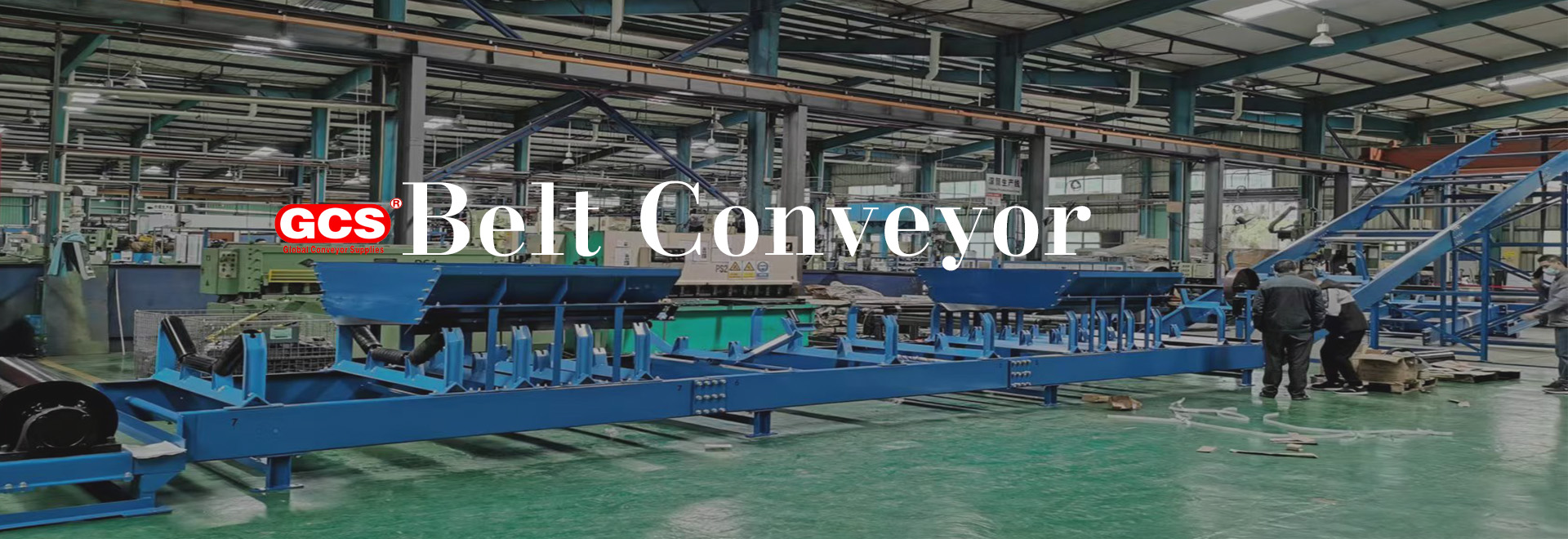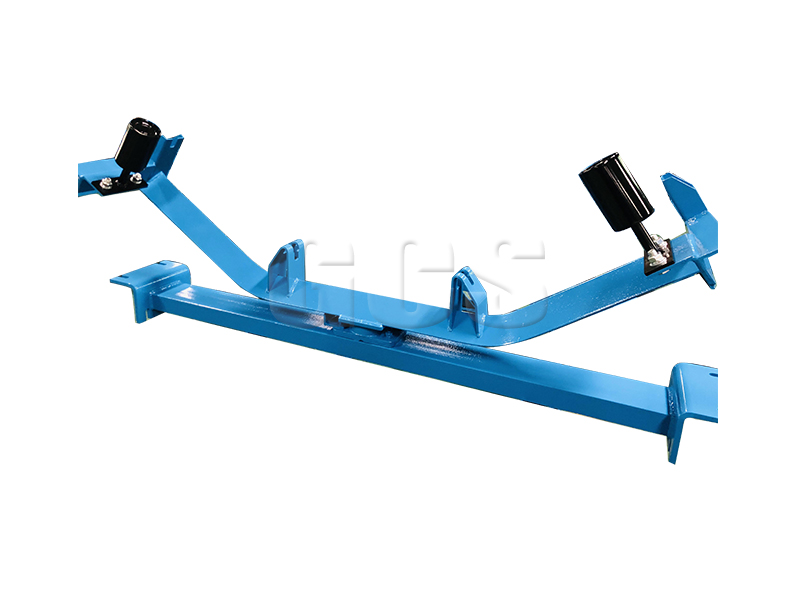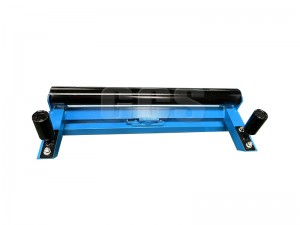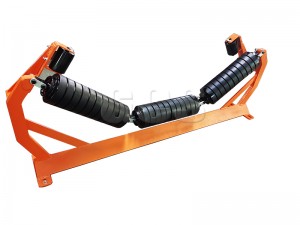A trough idler is a round, durable tube that is joined together to form a device called a trough idler. The rollers have a circular range of motion within the idler, which speeds up the entire conveying process and makes it more flexible.
Vintage
The benefits of using troughing rollers include ensuring an even load-carrying capacity along the length of the conveyor belt. Due to the more even distribution of the load, the maximum load of material at the loading point will not fall off the conveyor belt.
(1) Favourable operation of rubber conveyor belts: Taking full advantage of the vertical movement characteristics of the elastic rollers, the rollers can be adapted to any load. If the ground is uneven, causing the support to tilt laterally, the rollers can maintain balance.
(2) Easy roller replacement: If one roller is damaged, the entire roller assembly can be detached from the conveyor belt during uninterrupted operation, making it easy to replace at any time. If a rigidly fixed roller is used, the conveyor needs to be stopped to replace the roller, causing inconvenience.
(3) Reduced operating noise: As the rollers are flexibly connected, the relative motion of each parallel roller position in the roller assembly absorbs and eliminates vibration and shock, resulting in more stable operation.
Impact rollers are installed at the infeed point of the conveyor to protect the heat-resistant conveyor belt product. Each roller is made of resilient discs and is equipped with a certain spacing, which meets the rated load parameters and national standards requirements. Fully capable of meeting the requirements of conveying heavy and large materials on site.
Types of trough rollers include
Trough roller idler assemblies are commonly used to automatically correct conveyor belt deviation. When the conveyor belt deviates to one side, the automatic centering roller on that side will tilt to the other side, generating a centering force opposite to the direction of the conveyor belt deviation, so that the conveyor belt gradually returns to the center line.
Forward tilting roller assembly is mainly used to prevent the conveyor belt from tilting backward during transport to ensure the normal operation of the conveyor belt. This type of roller assembly is generally installed in front of the conveyor head and tail support rollers to maintain the forward movement of the conveyor belt.
The impact roller assembly is generally installed at the unloading end of the conveyor and is used to reduce the impact force on the conveyor belt and reduce wear. Its working principle is to use the elastic deformation of the cushioning roller assembly to absorb the impact energy during unloading, thus reducing the impact on the conveyor belt.
Production
During assembly of the idler pulley set, all parts and components must first be checked for conformity before assembly can proceed. The idler must be thoroughly cleaned before installation. When welding the bearing seat, it must be precisely positioned and the welding surface must be smooth without welding defects such as penetration or lamination. When using cast iron bearing housings, the housings should fit tightly to the tube body without any looseness. When labyrinth seals are used, the inner and outer seals shall be mounted on idler pulleys separately to prevent deformation of the seals and to affect the function. Lithium grease should occupy 2/3 of the space between the inner and outer seals of the bearing. The bearing unit should be orientated so that the nylon fixing bracket is open to the outside. After the bearing is mounted on the idler pulley, proper axial clearance must be maintained and must not be pressed. Each idler is sensitive to movement before moving to the next process.
When selecting and using trough-type roller sets, factors such as the carrying capacity of the conveyor belt and the transport distance should be considered. Generally speaking, for long-distance and large-capacity belt conveyor systems, trough-type roller assemblies with larger diameters and higher load-carrying capacities should be selected to ensure stable conveyance of the conveyor belt. In addition, regular maintenance and replacement of seals and bearings are required to ensure proper operation and prolong the service life of the roller assemblies.
GCS has an experienced team and would welcome the opportunity to discuss this further. Contact us now.
Related product
Post time: Dec-14-2023




